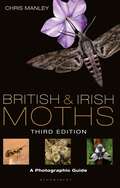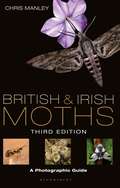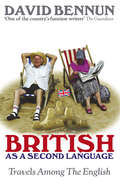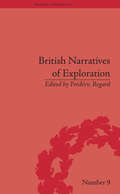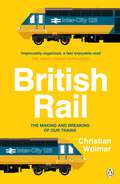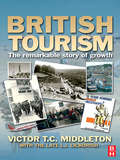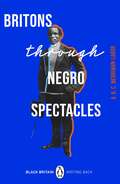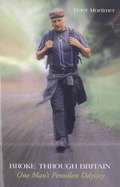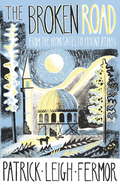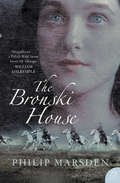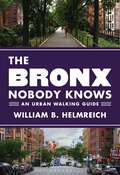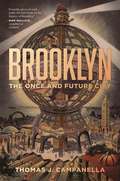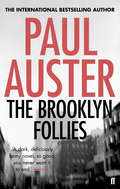- Table View
- List View
British Aerospace Tracked Rapier - Anti-aircraft Missile Defence Armoured Carrier (UEB contracted)
by RnibThis is an image of an armoured missile carrier seen from the side. There is a locator dot shown, which will be at the top left of the page when the image is the correct way up. The image is in the centre and a scale in metres on the bottom of the page. The vehicle's cab is on the left of the page with a door and window. It has an engine vent on the top right side. To the right of the page is the rotating missile launcher with its radar dish towards the top of the page and the two pointed noses of the missiles further down the page. In the middle of the vehicle body area is a long track guard flap. At the bottom of the diagram there are six wheels with a seventh spiked drive wheel on the left. At the bottom of the image the track of the vehicle is shown as a heavy dashed line, running upwards at the left and right.
British Aerospace Tracked Rapier - Anti-aircraft Missile Defence Armoured Carrier (UEB uncontracted)
by RnibThis is an image of an armoured missile carrier seen from the side. There is a locator dot shown, which will be at the top left of the page when the image is the correct way up. The image is in the centre and a scale in metres on the bottom of the page. The vehicle's cab is on the left of the page with a door and window. It has an engine vent on the top right side. To the right of the page is the rotating missile launcher with its radar dish towards the top of the page and the two pointed noses of the missiles further down the page. In the middle of the vehicle body area is a long track guard flap. At the bottom of the diagram there are six wheels with a seventh spiked drive wheel on the left. At the bottom of the image the track of the vehicle is shown as a heavy dashed line, running upwards at the left and right.
British and Irish Moths: A Photographic Guide
by Chris ManleyBritish Moths is the most comprehensive collection of photographs of British moths ever published. It covers both macro and micro species, and the images are all of living insects, taken in natural conditions. Concise text descriptions cover wingspan, status and distribution, flight period, habitat and larval foodplants, while thumbnail maps provide a quick overview of geographical distributions.This third edition has been significantly expanded so that it includes all species on the British list, approximately 2,500 in total, representing a magnificent achievement by the author, Chris Manley. It also includes updates to the text, improvements to the photographic selection, and extra identification hints. For the leaf-mining micros, photographs are included to demonstrate the all-important feeding signs that can often be a more reliable identification method than seeing the adult.This revised and now comprehensive edition is an essential part of the library of any moth enthusiast.
British and Irish Moths: A Photographic Guide
by Chris ManleyBritish and Irish Moths is the most comprehensive collection of photographs of British moths ever published. It covers both macro and micro species, and almost all the images are all of living insects, taken in natural conditions. Concise text descriptions cover wingspan, status and distribution, flight period, habitat and larval foodplants, while thumbnail maps provide a quick overview of geographical distributions.This third edition has been significantly expanded so that it includes all species on the British list, approximately 2,500 in total, representing a magnificent achievement by the author, Chris Manley. It also includes updates to the text, improvements to the photographic selection, and extra identification hints. For the leaf-mining micros, photographs are included to demonstrate the all-important feeding signs that can often be a more reliable identification method than seeing the adult.This revised and now comprehensive edition is an essential part of the library of any moth enthusiast.
British As A Second Language: Travels Among The English
by David BennunDavid Bennun had lived in Africa his whole life. At the age of 18 he came to Britain, the mother country. The country he had read about in Punch magazine or seen in films like Chariots of Fire. He was in for a shock. A very big shock indeed: 'I could not have been less prepared had I spent my life up to that point listening to 30-year-old broadcasts of the Light Programme.'In this timely follow-up to the critically acclaimed Tick Bite Fever, David Bennun shows us our own country through the eyes of an alien. With his brilliantly witty turn of phrase we follow his life as a student, his brushes with Bohemia, his troubles renting and buying property, his discovery of British food and his horrors at entering the world of work. From DIY to architecture, sport to alcohol, transport to music and entertainment, David Bennun brilliantly and with ruthless wit deconstructs all these subjects, many of them so dear to the British heart.
British Narratives of Exploration: Case Studies on the Self and Other (Empires in Perspective)
by Édéric RegardFeatures a collection of essays that focus on British travel narratives from the seventeenth through to the nineteenth centuries. This work investigates how the early explorers' sense of self was destabilised by encounters with the Other.
British Narratives of Exploration: Case Studies on the Self and Other (Empires in Perspective #9)
by Frederic RegardFeatures a collection of essays that focus on British travel narratives from the seventeenth through to the nineteenth centuries. This work investigates how the early explorers' sense of self was destabilised by encounters with the Other.
British Rail
by Christian WolmarThe authoritative and fascinating history of the rise and fall of the state-owned British Rail'Wolmar's book is impeccably organized and makes a fast, enjoyable read' THE TIMES Literary Supplement________You think you know British Rail. But you don't know the whole story.From its creation after the Second World War, through its fifty-year lifetime, British Rail was an innovative powerhouse that transformed our transport system. Uniting disparate lines into a highly competent organisation - heralding 'The Age of the Train' - and, for a time, providing one of the fastest regular rail services in the world.Born into post-war austerity, traumatised, impoverished and exploited by a hostile press, the state-owned railway was dismissed as a dinosaur unable to evolve, and swept away by a government hellbent on selling it off.Now, award-winning writer Christian Wolmar provides a new perspective on national loss in a time of privatisation.British Rail is ripe for a new history._______Praise for Christian WolmarThe greatest expert on British trains' Guardian'Our most eminent transport journalist' Spectator'If the world's railways have a laureate, it is surely Christian Wolmar' Boston Globe 'Christian Wolmar is in love with the railways. He writes constantly and passionately about them. He is their wisest, most detailed historian and a constant prophet of their rebirth . . . if you love the hum of the wheels and of history, then Christian Wolmar is your man' Observer
British Tourism
by Leonard J Lickorish Victor T.C. MiddletonTourism at any point in time is in many ways a mirror of economic and social change. The changes in British society in the decades from the 1950s to the 21st century are reflected in the forms of tourism that the British have been able to aspire to and afford. 'British Tourism: A Remarkable Story of Growth' identifies the most significant of these changes and places them in an historical context highlighting four distinctive eras. Now in paperback it includes four colour photos as well as two brand new chapters on tourism in Scotland and Wales.It looks in detail at the following key areas: * The roots of post war tourism growth * Developments in transport and regulation * Developments in accommodation and visit attractions * Marketing developments and trends - the role of entrepreneurs * Tourism trends into the 21st centuryOffering a comprehensive evaluation of post war developemnts in the British tourism industry, British Tourism: The remarkable story of growth, acts as a single reference resource suitable for a wide ranging readership from students on tourism courses and practitioners in the travel and tourism industries
British Tourism: The Remarkable Story Of Growth
by Leonard J Lickorish Victor T.C. MiddletonTourism at any point in time is in many ways a mirror of economic and social change. The changes in British society in the decades from the 1950s to the 21st century are reflected in the forms of tourism that the British have been able to aspire to and afford. 'British Tourism: A Remarkable Story of Growth' identifies the most significant of these changes and places them in an historical context highlighting four distinctive eras. Now in paperback it includes four colour photos as well as two brand new chapters on tourism in Scotland and Wales.It looks in detail at the following key areas: * The roots of post war tourism growth * Developments in transport and regulation * Developments in accommodation and visit attractions * Marketing developments and trends - the role of entrepreneurs * Tourism trends into the 21st centuryOffering a comprehensive evaluation of post war developemnts in the British tourism industry, British Tourism: The remarkable story of growth, acts as a single reference resource suitable for a wide ranging readership from students on tourism courses and practitioners in the travel and tourism industries
British WW1 Biplane (large print)
by RnibThis page shows two views of a World War 1 military plane. There is a locator dot shown, which will be at the top left, when the image is the correct way up. There is a side view facing to the left on the left of the page and a top view on the right of the page. On the left of the side view is a large two-bladed wooden propeller. To the right is the engine fairing. On the top of this is a machine gun facing to the left. To the right up and down from the gun are the end edges of two wings. The upper wing is slightly to the left (forward) of the lower wing. There are two long wooden vertically slanting struts between the wings. A second pair of short struts goes between the upper wing and the body of the plane. Down from the lower wing are two more struts which lead to the plane's wheels. From the wings, the plane's fuselage stretches out to the right. Between the wings in the top of the fuselage is the rounded recess of the cockpit. Halfway along the fuselage it is marked with a large letter G and a British blue, white and red roundel. At the end of the fuselage is the tail. The vertical part is divided into two halves. The half to the right is an aileron which can be moved to adjust the plane's flight path. It is decorated with a blue, white and red stripe. Just the end edge of the horizontal part of the tail can be found. Down from the tail is the tail skid, a small short strut which rests on the ground when the plane is stationary and protects the tail on takeoff and landing. The top view shows the plane facing up the page. The propeller is at the top centre of the page. Down from this is the front of the engine fairing. The tips of two machine guns poke out, sitting on top of the fairing. Then the top wing stretches to the right and left. In the centre of the wing there is a rectangular hatch through the wing. The upper wing is decorated with two British blue, white and red roundels, one to the left and one to the right. In the bottom right and left of the wings is an aileron which can be moved to adjust the plane's flight path. The upper wing is slightly up the page from the lower wing, so only the rear part of the lower wing can be found. Down the page from the centre of the wings is the top of the fuselage. In the first part of it half the rounded cockpit shows through a rounded recess in the upper wing. The other half of the cockpit is hidden by the upper wing. At the bottom of the page at the end of the fuselage is the tail. The rear part of each tail piece is an aileron which can be moved to adjust the plane's flight path. The biplane is painted khaki green. There are many wires going between the wings, and the wings and the body. They are a tension structures to act against the resistance of the wooden struts for structural strength. The machine gun fires through the sweep of the propeller but the firing is ingeniously timed not to hit the propeller blades.
British WW1 Biplane (UEB contracted)
by RnibThis page shows two views of a World War 1 military plane. There is a locator dot shown, which will be at the top left, when the image is the correct way up. There is a side view facing to the left on the left of the page and a top view on the right of the page. On the left of the side view is a large two-bladed wooden propeller. To the right is the engine fairing. On the top of this is a machine gun facing to the left. To the right up and down from the gun are the end edges of two wings. The upper wing is slightly to the left (forward) of the lower wing. There are two long wooden vertically slanting struts between the wings. A second pair of short struts goes between the upper wing and the body of the plane. Down from the lower wing are two more struts which lead to the plane's wheels. From the wings, the plane's fuselage stretches out to the right. Between the wings in the top of the fuselage is the rounded recess of the cockpit. Halfway along the fuselage it is marked with a large letter G and a British blue, white and red roundel. At the end of the fuselage is the tail. The vertical part is divided into two halves. The half to the right is an aileron which can be moved to adjust the plane's flight path. It is decorated with a blue, white and red stripe. Just the end edge of the horizontal part of the tail can be found. Down from the tail is the tail skid, a small short strut which rests on the ground when the plane is stationary and protects the tail on takeoff and landing. The top view shows the plane facing up the page. The propeller is at the top centre of the page. Down from this is the front of the engine fairing. The tips of two machine guns poke out, sitting on top of the fairing. Then the top wing stretches to the right and left. In the centre of the wing there is a rectangular hatch through the wing. The upper wing is decorated with two British blue, white and red roundels, one to the left and one to the right. In the bottom right and left of the wings is an aileron which can be moved to adjust the plane's flight path. The upper wing is slightly up the page from the lower wing, so only the rear part of the lower wing can be found. Down the page from the centre of the wings is the top of the fuselage. In the first part of it half the rounded cockpit shows through a rounded recess in the upper wing. The other half of the cockpit is hidden by the upper wing. At the bottom of the page at the end of the fuselage is the tail. The rear part of each tail piece is an aileron which can be moved to adjust the plane's flight path. The biplane is painted khaki green. There are many wires going between the wings, and the wings and the body. They are a tension structures to act against the resistance of the wooden struts for structural strength. The machine gun fires through the sweep of the propeller but the firing is ingeniously timed not to hit the propeller blades.
British WW1 Biplane (UEB uncontracted)
by RnibThis page shows two views of a World War 1 military plane. There is a locator dot shown, which will be at the top left, when the image is the correct way up. There is a side view facing to the left on the left of the page and a top view on the right of the page. On the left of the side view is a large two-bladed wooden propeller. To the right is the engine fairing. On the top of this is a machine gun facing to the left. To the right up and down from the gun are the end edges of two wings. The upper wing is slightly to the left (forward) of the lower wing. There are two long wooden vertically slanting struts between the wings. A second pair of short struts goes between the upper wing and the body of the plane. Down from the lower wing are two more struts which lead to the plane's wheels. From the wings, the plane's fuselage stretches out to the right. Between the wings in the top of the fuselage is the rounded recess of the cockpit. Halfway along the fuselage it is marked with a large letter G and a British blue, white and red roundel. At the end of the fuselage is the tail. The vertical part is divided into two halves. The half to the right is an aileron which can be moved to adjust the plane's flight path. It is decorated with a blue, white and red stripe. Just the end edge of the horizontal part of the tail can be found. Down from the tail is the tail skid, a small short strut which rests on the ground when the plane is stationary and protects the tail on takeoff and landing. The top view shows the plane facing up the page. The propeller is at the top centre of the page. Down from this is the front of the engine fairing. The tips of two machine guns poke out, sitting on top of the fairing. Then the top wing stretches to the right and left. In the centre of the wing there is a rectangular hatch through the wing. The upper wing is decorated with two British blue, white and red roundels, one to the left and one to the right. In the bottom right and left of the wings is an aileron which can be moved to adjust the plane's flight path. The upper wing is slightly up the page from the lower wing, so only the rear part of the lower wing can be found. Down the page from the centre of the wings is the top of the fuselage. In the first part of it half the rounded cockpit shows through a rounded recess in the upper wing. The other half of the cockpit is hidden by the upper wing. At the bottom of the page at the end of the fuselage is the tail. The rear part of each tail piece is an aileron which can be moved to adjust the plane's flight path. The biplane is painted khaki green. There are many wires going between the wings, and the wings and the body. They are a tension structures to act against the resistance of the wooden struts for structural strength. The machine gun fires through the sweep of the propeller but the firing is ingeniously timed not to hit the propeller blades.
British WW1 Tank (large print)
by RnibThis page shows two views of an early World War 1 tank. There is a locator dot shown, which will be at the top left, when the image is the correct way up. There is a side view facing to the left at the top of the page and a front view in the bottom left of the page. On the side view there is a heavy dashed line around the body of the tank, representing its caterpillar track. In the middle of the side wall of the tank is a sponson with a cannon poking out and forwards. On the right is a radiator grill. The front view shows how the sponsons on each side of the tank stick out from the side wall of the tank. A cannon pokes out from a cylindrical part of the sponson. This allows the cannon to be rotated to give a wider range of fire. In from the sponsons is the leading edge of the two large segmented caterpillar tracks. In the top centre of the image are two hatch covers which could be opened allowing the occupants to see out.
British WW1 Tank (UEB contracted)
by RnibThis page shows two views of an early World War 1 tank. There is a locator dot shown, which will be at the top left, when the image is the correct way up. There is a side view facing to the left at the top of the page and a front view in the bottom left of the page. On the side view there is a heavy dashed line around the body of the tank, representing its caterpillar track. In the middle of the side wall of the tank is a sponson with a cannon poking out and forwards. On the right is a radiator grill. The front view shows how the sponsons on each side of the tank stick out from the side wall of the tank. A cannon pokes out from a cylindrical part of the sponson. This allows the cannon to be rotated to give a wider range of fire. In from the sponsons is the leading edge of the two large segmented caterpillar tracks. In the top centre of the image are two hatch covers which could be opened allowing the occupants to see out.
British WW1 Tank (UEB uncontracted)
by RnibThis page shows two views of an early World War 1 tank. There is a locator dot shown, which will be at the top left, when the image is the correct way up. There is a side view facing to the left at the top of the page and a front view in the bottom left of the page. On the side view there is a heavy dashed line around the body of the tank, representing its caterpillar track. In the middle of the side wall of the tank is a sponson with a cannon poking out and forwards. On the right is a radiator grill. The front view shows how the sponsons on each side of the tank stick out from the side wall of the tank. A cannon pokes out from a cylindrical part of the sponson. This allows the cannon to be rotated to give a wider range of fire. In from the sponsons is the leading edge of the two large segmented caterpillar tracks. In the top centre of the image are two hatch covers which could be opened allowing the occupants to see out.
Britons Through Negro Spectacles (Black Britain: Writing Back)
by ABC Merriman-Labor'We shall therefore confine our walk to Central London where people meet on business during the day, and to West London where they meet for pleasure at night. If you will walk about the first City in the British Empire arm in arm with Merriman-Labor, you are sure to see Britons in merriment and at labour, by night and by day, in West and Central London.'In Britons Through Negro Spectacles Merriman-Labor takes us on a joyous, intoxicating tour of London at the turn of the 20th century. Slyly subverting the colonial gaze usually placed on Africa, he introduces us to the citizens, culture and customs of Britain with a mischievous glint in his eye. This incredible work of social commentary feels a century ahead of its time, and provides unique insights into the intersection between empire, race and community at this important moment in history.Selected by Booker Prize-winning author Bernardine Evaristo, this series rediscovers and celebrates pioneering books depicting black Britain that remap the nation.
Broke Through Britain: One Man's Penniless Odyssey
by Peter MortimerDuring the summer of 1998, Peter Mortimer set off on the 500-mile journey from Plymouth to Edinburgh, accompanied only by his King Charles spaniel. He took no money and had no transport or pre-arranged accommodation. Bereft of the basics necessary for human existence, such as food and shelter, he was dependent for his survival on his own wits, the generosity of others and good fortune.
The Broken Road: From the Iron Gates to Mount Athos (Nyrb Classics Ser.)
by Patrick Leigh FermorThe long-awaited final volume of the trilogy by Patrick Leigh Fermor. A Time of Gifts and Between the Woods and the Water were the first two volumes in a projected trilogy that would describe the walk that Patrick Leigh Fermor undertook at the age of eighteen from the Hook of Holland to Constantinople. 'When are you going to finish Vol. III?' was the cry from his fans; but although he wished he could, the words refused to come. The curious thing was that he had not only written an early draft of the last part of the walk, but that it predated the other two. It remains unfinished but The Broken Road - edited and introduced by Colin Thubron and Artemis Cooper - completes an extraordinary journey.
The Bronski House (Text Only): A Return To The Borderlands
by Philip MarsdenA remarkable, multifaceted story made up of journal accounts, memories, conversations and personal experience, The Bronski House is a paean to Poland, a landmark in travel writing, and a family history – tied together by the unique experience of returning from exile.
The Bronx Nobody Knows: An Urban Walking Guide
by William B. HelmreichA neighborhood-by-neighborhood guide to New York City’s northern borough, from the award-winning author of The New York Nobody KnowsBill Helmreich walked every block of New York City—some six thousand miles—to write the award-winning The New York Nobody Knows. Later, he re-walked most of the Bronx to create this one-of-a-kind walking guide to the city’s northern borough, from Mott Haven to City Island. Drawing on hundreds of conversations he had with residents during his block-by-block journey through this fascinating, diverse, and underappreciated borough, Helmreich highlights hundreds of facts and points of interest that you won’t find in any other guide.In the West Bronx, you’ll discover the spot where DJ Cool Herc is believed to have given birth to hip hop in 1973, at a party on Sedgwick Avenue overlooking the Harlem River. In Concourse East, once home to a vibrant Jewish community, you will learn about a beautiful, perfectly preserved, hidden synagogue. In Allerton, you will visit a family-run Italian bakery where the third-generation owner still makes his own cannoli and uses the original recipe for their famous rainbow cookies. In Pelham Parkway/Pelham Gardens, you will explore the city’s largest park, the stunning 2,700-acre Pelham Bay Park. And much, much more.An unforgettably vivid chronicle of today’s Bronx, the book can be enjoyed without ever leaving home—but it’s almost guaranteed to inspire you to get out and explore this captivating borough.Covers every one of the Bronx’s neighborhoods, providing a colorful portrait of their most interesting, unusual, and unfamiliar people, places, and thingsEach neighborhood section features a brief overview and history; a detailed, user-friendly map keyed to the text; photographs; and a lively guided walking tourDraws on the author’s walk through every Bronx neighborhoodIncludes insights from conversations with hundreds of residents
Brooklyn: The Once and Future City
by Thomas CampanellaAn unprecedented history of Brooklyn, told through its places, buildings, and the people who made them, from the early seventeenth century to todayAmerica's most storied urban underdog, Brooklyn has become an internationally recognized brand in recent decades—celebrated and scorned as one of the hippest destinations in the world. In Brooklyn: The Once and Future City, Thomas J. Campanella unearths long-lost threads of the urban past, telling the rich history of the rise, fall, and reinvention of one of the world’s most resurgent cities.Spanning centuries and neighborhoods, Brooklyn-born Campanella recounts the creation of places familiar and long forgotten, both built and never realized, bringing to life the individuals whose dreams, visions, rackets, and schemes forged the city we know today. He takes us through Brooklyn’s history as homeland of the Leni Lenape and its transformation by Dutch colonists into a dense slaveholding region. We learn about English émigré Deborah Moody, whose town of Gravesend was the first founded by a woman in America. We see how wanderlusting Yale dropout Frederick Law Olmsted used Prospect Park to anchor an open space system that was to reach back to Manhattan. And we witness Brooklyn’s emergence as a playland of racetracks and amusement parks celebrated around the world.Campanella also describes Brooklyn’s outsized failures, from Samuel Friede’s bid to erect the world’s tallest building to the long struggle to make Jamaica Bay the world’s largest deepwater seaport, and the star-crossed urban renewal, public housing, and highway projects that battered the borough in the postwar era. Campanella reveals how this immigrant Promised Land drew millions, fell victim to its own social anxieties, and yet proved resilient enough to reawaken as a multicultural powerhouse and global symbol of urban vitality.
Brooklyn Bartender: A Modern Guide to Cocktails and Spirits
by Carey JonesAdd a dash of cool to your cocktail with The Brooklyn Bartender, an entertaining and informative illustrated guide for anyone who wants to mix delicious, unique and hip variations on classic drinks and spirits. From "one of the best cocktail writers around" (Library Journal) Carey Jones, comes a unique and practical guide to the most inventive drinks being served by real mixologists in Brooklyn clubs and bars today. Featuring full color images, recipes, tips, and handily organized by spirit, The Brooklyn Bartender also profiles the bars, pubs, and gastropubs and the resident bartender's recommendations for events and more. You'll enjoy: Chapters on gin, vodka, whiskey, rum and cachaca, tequila, mezcal, brandy, amaro and more Details on wine, beer, and bubbly treats Techniques, or when to shake and when to stir Recipes for syrups and infusions Tips on stocking your home bar for any event A primer on standard equipment for upping your mixing talentWhether you want to sit at one of these cool bars and sip the house creation or begin your own mixing at home inspired by the experts from New York City's coolest borough, The Brooklyn Bartender is a great addition to your home library and the perfect gift. Cheers!
Brooklyn Bartender: A Modern Guide to Cocktails and Spirits
by Carey JonesAdd a dash of cool to your cocktail with The Brooklyn Bartender, an entertaining and informative illustrated guide for anyone who wants to mix delicious, unique and hip variations on classic drinks and spirits. From "one of the best cocktail writers around" (Library Journal) Carey Jones, comes a unique and practical guide to the most inventive drinks being served by real mixologists in Brooklyn clubs and bars today. Featuring full color images, recipes, tips, and handily organized by spirit, The Brooklyn Bartender also profiles the bars, pubs, and gastropubs and the resident bartender's recommendations for events and more. You'll enjoy:Chapters on gin, vodka, whiskey, rum and cachaca, tequila, mezcal, brandy, amaro and more Details on wine, beer, and bubbly treats Techniques, or when to shake and when to stir Recipes for syrups and infusions Tips on stocking your home bar for any event A primer on standard equipment for upping your mixing talent Whether you want to sit at one of these cool bars and sip the house creation or begin your own mixing at home inspired by the experts from New York City's coolest borough, The Brooklyn Bartender is a great addition to your home library and the perfect gift. Cheers!
The Brooklyn Follies: A Novel (Thorndike Americana Ser.)
by Paul Auster'I was looking for a quiet place to die. Someone recommended Brooklyn, and so the next morning I travelled down there from Westchester to scope out the terrain . . .'So begins Paul Auster's remarkable new novel, The Brooklyn Follies. Set against the backdrop of the contested US election of 2000, it tells the story of Nathan and Tom, an uncle and nephew double-act. One in remission from lung cancer, divorced, and estranged from his only daughter, the other hiding away from his once-promising academic career, and, indeed, from life in general.Having accidentally ended up in the same Brooklyn neighbourhood, they discover a community teeming with life and passion. When Lucy, a little girl who refuses to speak, comes into their lives, there is suddenly a bridge from their pasts that offers them the possibility of redemption. Infused with character, mystery and humour, these lives intertwine and become bound together as Auster brilliantly explores the wider terrain of contemporary America - a crucible of broken dreams and of human folly. 'Auster at the top of his game. This superb novel about human folly turns out to be tremendously wise.' New Statesman

